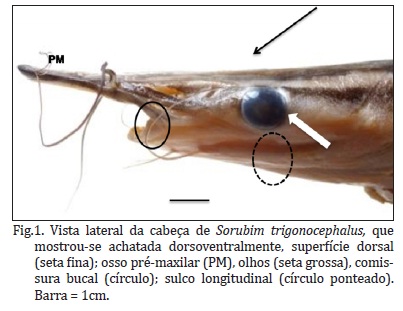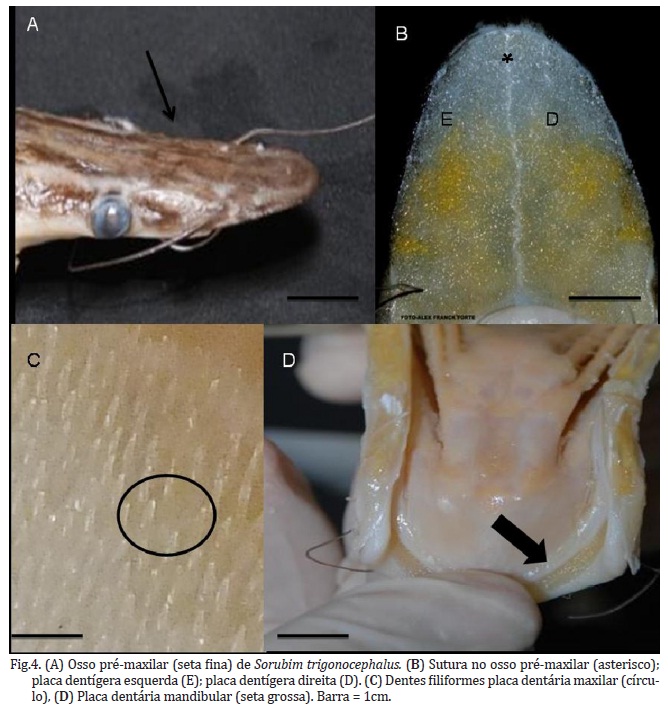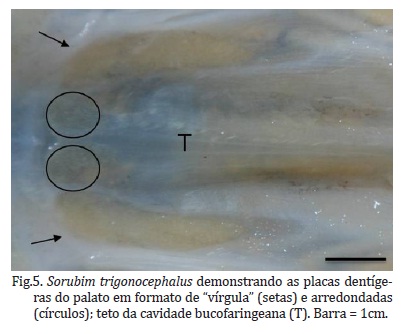Sorubim trigonocephalus Miranda et Ribeiro, 1920 is popularly known as slipper, migratory specie of economic importance. It is much appreciated in gastronomy because it has good flavor and no intermuscular bones (spines). Specimens were collected on a stretch of the Teles Pires river, located in Alta Floresta/MT, anesthetized and euthanized in aqueous solution of benzocaine, fixed with 10% formaldehyde and transferred to the Laboratory of Animal Anatomy of Unemat to be analyzed and described the characteristics of the buccopharyngeal cavity. With a premaxilla well developed and head dorsoventrally flattened, S. trigonocephalus show out located on the ventral portion of the head mouth wide slit. The upper lip pigmentation had dark gray with small light areas, wider than the and without pigmentation. Was identified four dentigerous regions in in the anterior oral cavity and two in the pharynx region, both with viniliform tooth. The posterior portion of the oral cavity was bounded laterally by four pairs of gill arches that decreased in size from first to last pair, formed by two branches: the higher, shorter, and the lower, longer. The buccopharyngea cavity of S. trigonocephalus showed similar to other teleosts described in the literature, and is adapted to eating habits with diet ictiophagic carnivore and differing only by the absence of a structural tongue and pre maxilla well developed showing viniliform tooth.
Sorubim trigonocephalus; Pimelodidae; fish slipper; buccopharyngea cavity; morphology; teleosts







